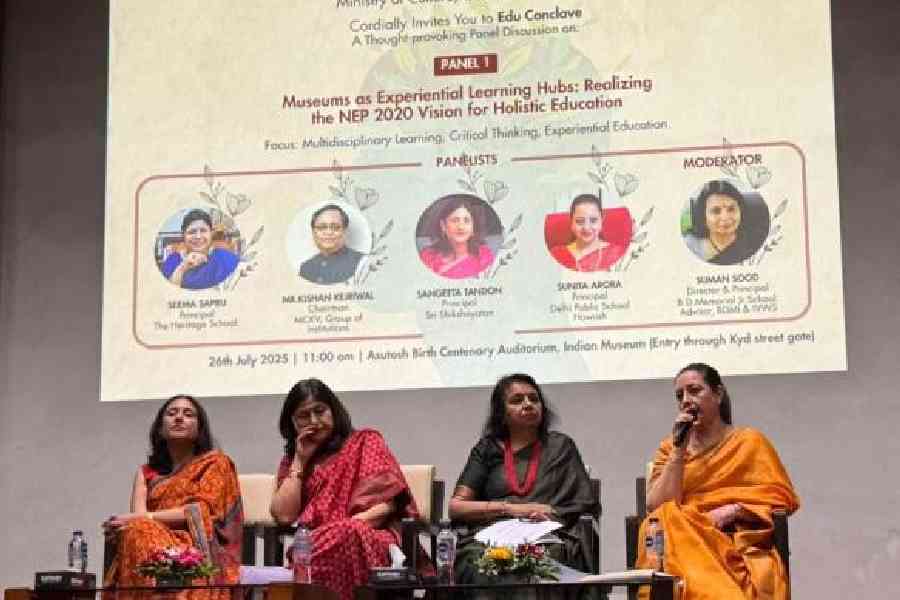An annual field trip to the museum is not enough. Students need regular engagement, and teachers must pre-plan activities to make museums an integral part of the teaching and learning process.
This was the key message from educators and museum authorities who gathered at the Indian Museum on Saturday to discuss how to better educate school students about culture, legacy and heritage while integrating museums into everyday learning.
The Indian Museum Kolkata, in collaboration with Early Childhood Association (ECA) and Association of Primary Education and Research (Aper), hosted Edu Conclave 2025, bringing together school leaders and cultural experts to explore museums’ evolving role as educational partners.
Like a classroom
“Museums have to become extensions of the classrooms, and schools can set up walking galleries on their premises. When students walk into a museum gallery, there is a certain context and feel which is not there when they are learning from books. Museums have to become part of the curriculum,” said Seema Sapru, principal of The Heritage School.
Suman Sood, director of BDM Junior School and a national core committee member of ECA and Aper, emphasised the need for storytelling and regular interaction. “There is a story in every nook and corner of a museum, but someone has to tell that story to our children. A one-day field trip is not an answer — there have to be regular visits and interaction.”
Museums can engage children at various levels through strategic planning. “If children are studying the Indus Valley Civilisation in class, teachers have to pre-plan activities in the museum where they can go, see and study those pieces of history. For those in early childhood, museums can serve as sources of sensorial learning,” Sood of BDM Junior School said.
The day-long programme had three panel discussions examining museums’ role under the National Education Policy 2020, including “Museums As Experiential Learning Hubs,” “Reviving Indian Knowledge Systems,” and “From Curriculum To Community: Museums As Educational Partners.”
Textbooks & heritage
“The concept of museums is changing — these are cultural spaces now and we have to make our students understand this,” said Sayan Bhattacharya, deputy director of Indian Museum Kolkata. “The textbook has to be connected with the museum. What students learn in their books, they can see and feel through replicas in the museum.”
Several innovative approaches emerged from the discussions:
Bringing museums to public spaces: Swati Sarawagi, territory head of ECA Bengal and director of Swarnim International School, suggested moving museum artefacts beyond their traditional walls. “There should be efforts to bring out replicas or create display boards in public spaces like airports or railway stations to grab attention among youth.”
Active learning experiences: Satabdi Bhattacharjee, principal of The Newtown School, proposed creative programming including historical movie screenings, comparative studies of contemporary women with those from Indus Valley, and workshops on antique jewellery or costumes. “History is much beyond memorising dates,” she noted.
Overcoming obstacles
However, educators acknowledged significant obstacles. “We are largely failing because we are caught in the rat race of completing the syllabus. We adults need to change our outlook on how we transfer knowledge to our children,” Bhattacharjee of The Newtown School said.
The challenge lies in moving from theoretical discussions to practical implementation. Museums can lend artefacts to schools for demonstration, students should participate more actively in museum workshops, and regular collaboration between teachers and museum authorities must replace sporadic field trips.
“Museums are places for experiential learning,” said Sunita Arora, principal of Delhi Public School, Howrah, highlighting the shift toward making cultural institutions active partners in education rather than passive destinations for occasional visits.The Indian Museum Kolkata emphasised its commitment to “reaffirm its role as an active educational resource, building partnerships that connect heritage with classrooms and policy with practice”.

